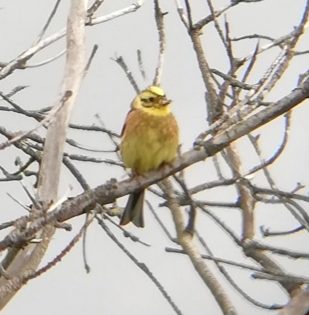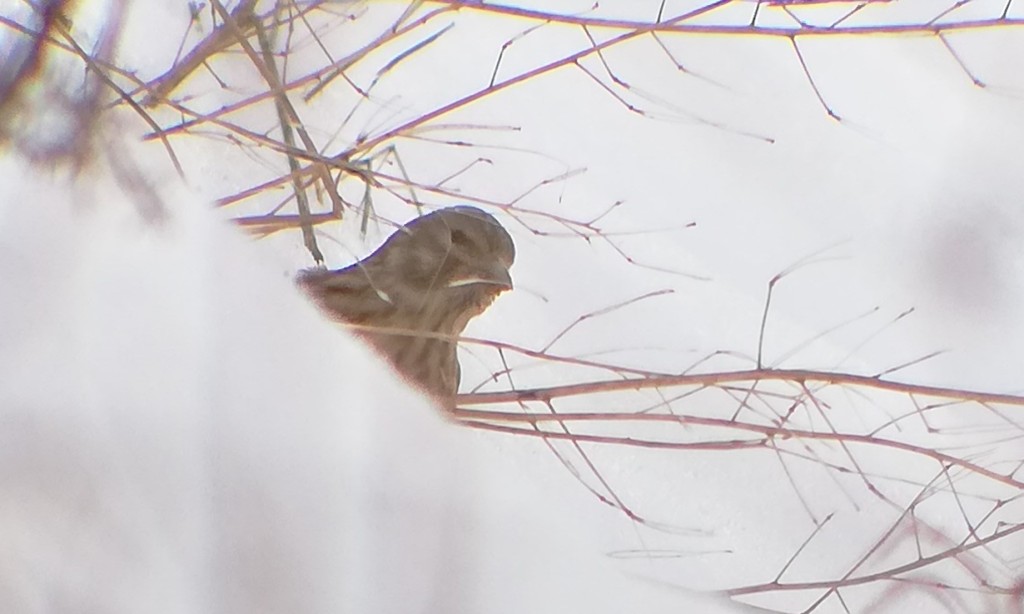February is hardly the peak of birding fun in Oslo. Winter is generally far from releasing its grip on the city, with lakes bleakly frozen and land smothered in a blanket of snow and ice. The best bet for something resembling action is therefore the Oslofjord, where the water’s influence ensures temperatures are a crucial couple of degrees warmer than further inland. This can be make or break for species attempting to eke out a living at this most unforgiving time of year. The fjord, being to the south of the city, is also often where the first, intrepid spring migrants turn up. Even in the midst of this particularly cold and severe winter, Stock Doves have arrived earlier than usual and the first Greylags are fussing noisily around between the islands. Bolstered by recent reports of these as well as a couple of other interesting species, not to mention temperatures on the right side of zero, today I took a trip to Nakkholmen, the outermost of the islands reachable by boat from the city.
The first interesting bird fell soon after stepping off the boat: a male Smew, in the company of a male Red-breasted Merganser. This is only the second time I have seen a (wild) male Smew, and it is one of my all-time favourite birds. Almost entirely white with a handful of artistic black markings, the male seems to be crafted out of porcelain. The impression of fragile daintiness was reinforced by its proximity to the merganser which, while beautiful and gracefully slender itself, is a considerably larger species. Both ducks were preening on the mirror-still fjord when I first locked onto them, but then the Smew began diving frequently and was having some success. It caught a long, eel-like fish and was clearly struggling to convince the fish that its number was up. The fish was writhing all around the duck’s head, twisting this way and that, and it was enough of a task for the duck simply to hang on to it. Eventually the Smew got his way, and the fish disappeared like a strand of spaghetti. I was left, as I often am when birding in Norway, imagining how ecstatic 10-year-old Jack would have been at seeing these two ducks together. 30-year-old Jack was pretty chuffed too.
My next target was Twite, a finch which is another perennial personal favourite, though not particularly because of its rather anonymous looks. I find Twite exciting partly because they are infrequent passage visitors to the Oslo area. They belong in that category of hardy birds which may even choose to spend the winter in the Oslo area having bred further north. (This is also the case for the trio of Purple Sandpipers I picked out in my scope at their usual winter haunt on Bygdøy across the fjord.) A pair of Twite had been seen on Nakkholmen recently, so I found the spot—a promising looking scrubby patch of plants that had gone to seed—and settled in to wait.
It wasn’t long before I picked out a finch call approaching that was different to that of the chatty Greenfinches in the treetops around me. I dismissed my initial reaction to the call on the grounds of possibility. A Linnet (a close cousin of my target species) in February would be literally unheard of in these parts. No, I’m not completely familiar with the wide call repertoire of this species pair; this must be a Twite. The bird seemed quite wary and an overly abrupt movement on my part as it appeared to be considering landing sent it in a wide arc over the bay. Eventually it came down in the exact area I hoped it would, and I was able to begin studying it. This was hard going, as the bird was hopping around in the middle of the scrub in characteristic Linaria finch fashion. It was nibbling on seeds that had either fallen on the snow or that were accessible from ground level, occasionally flying up on a bush to get its bearings before fluttering back down.
Despite the frustratingly fleeting nature of anything that could be described as approaching good views, little of what I was seeing was convincing me that this was a Twite rather than a Linnet. The head was grey and unstreaked, the back seemed often strikingly orangey-brown against the snow and contrasted with the duller underparts, unlike the Twite’s overall buffier appearance. The bird would often disappear in the undergrowth or among the undulations in the snow, so I was left feeling quite unsure. Was this just an unusually plain-headed Twite? Not long after, noise from construction work at a nearby cabin on the island spooked the bird and it flew off calling in a manner that had I heard it in the breeding season here would have not confused me for a second: a crystal clear Linnet. I decided to stay put to see if the bird would return. This was a good, sheltered spot for feeding, so I imagined it would be tempted to fly back.
Sure enough, it wasn’t long before the bird returned. This time, it landed briefly in a tree behind me which offered me my best views. Now I was far surer of my original diagnosis. Tellingly, the bill was dark grey rather than the winter Twite’s diagnostic yellow, and I could distinguish a pale cheek spot that stood out in the grey of the head: a classic fieldmark for Linnet. This was a female; had it been a male perched on a branch in this way, I definitely would have seen some faint red markings on the breast. I realised I should try to get some sort of documentation for this find, not only because Twite were also being seen here and this is a classic confusion pair, but also because this was a very unusual find for the time of year. The bird quickly flew back to the scrubby patch again and began feeding. Approaching extremely cautiously, I managed to get to within a couple of metres of the bird but it was still hidden behind a lump of snow. I took some pictures and a minute-long video clip, from which I have since been able to extract some shots of the bird that are enough to confirm its ID.
This bird constitutes the first ever February find of Linnet in Oslo and the wider Akershus county, coming on the back of an unexpected January sighting of a small flock in an agricultural area about 10km away on the mainland. Linnet normally migrate to escape the winter, and it is a wonder that they have been managing to cling on during what is one of the coldest and snowiest winters for many decades. It does make me wonder if they have historically been overlooked and passed off as Twite, the more probable species at this time of year. Neither species allows for particularly close approach, many of the calls are extremely similar, and even average views can still be the cause of uncertainty. Equally, perhaps these unprecedented winter sightings represent a new trend for the species as it hedges its bets in a rapidly changing climate, and these birds are pioneers who are choosing to stick around the breeding areas in the hope of milder winters. The odds are certainly not in their favour this year, but then again, these birds are clearly hardy. A third, related option is that this bird is a very early returner, flown in with the slightly warmer temperatures of recent days that have brought the Stock Doves and Greylags with them.
Admittedly, I was hoping for Twite. Linnet is a fairly safe bet for the islands in the Oslofjord from spring to autumn, while Twite can be blink-and-you’ll-miss-them passage birds. On balance, though, I can’t complain about this unprecedented Linnet sighting. It proves that even harsh winters like this can throw up some surprises. The locally scarce Stonechat that was also seen in Oslo on the same day proves it, and I hope this good day for birds is a sign of the exciting things to come as spring finally begins to wake up.


Leave a comment